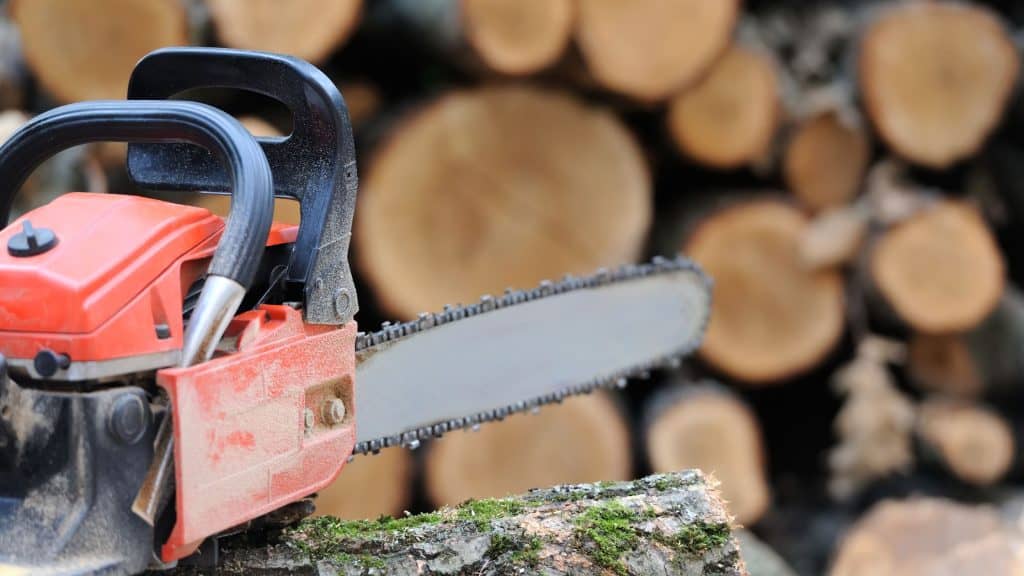The chainsaw is a powerful tool that has revolutionized the way we manage trees, clear debris, and tackle various outdoor tasks. However, with great power comes great responsibility. Operating a chainsaw demands careful attention, proper technique, and a deep understanding of safety measures to prevent accidents and ensure a successful outcome. In this blog, we’ll delve into essential tips for using a chainsaw safely, allowing you to confidently handle this versatile tool while minimizing risks.
Prioritize Protective Gear
Before firing up the chainsaw, don’t skip the step of putting on the appropriate protective gear. This includes:
- A hard hat to shield your head from falling debris.
- Eye protection, such as safety glasses or goggles, to prevent wood chips or debris from entering your eyes.
- Hearing protection to reduce the noise level’s impact on your ears.
- A long-sleeved shirt, sturdy pants, and gloves to shield your skin from potential scratches or cuts.
- Steel-toed boots to provide protection for your feet against falling objects or accidental contact with the chainsaw.
Choose the Right Chainsaw
Selecting the right chainsaw for your task is essential for safe operation. Consider factors like the size of the wood you’ll be cutting, your own physical capabilities, and the type of chainsaw (gas-powered, electric, battery-operated). Ensure that the chainsaw is properly maintained and well-suited for the job at hand.
Read the Manual and Understand Your Chainsaw
Before you start the chainsaw, take the time to thoroughly read the user manual provided by the manufacturer. Familiarize yourself with the controls, safety features, and proper maintenance procedures. Understanding how your chainsaw functions will help you use it effectively and safely.
Plan and Prepare
Before you begin cutting, assess the area and plan your approach. Remove any obstacles, debris, or potential hazards that could impede your movement or cause accidents. Make sure you have a clear escape route in case the tree or limb falls unexpectedly.
Maintain a Safe Work Zone
Establish a safe perimeter around the cutting area, keeping bystanders and pets at a significant distance. Maintain a clear zone where no one is allowed to enter while you’re operating the chainsaw.
Proper Body Positioning and Technique
Maintaining the correct body positioning and technique is crucial to chainsaw safety:
- Stand with your feet shoulder-width apart for stability.
- Hold the chainsaw firmly with both hands, ensuring a secure grip on the handles.
- Keep your left hand on the front handle and your right hand on the rear handle.
- Maintain a firm stance and avoid overreaching while cutting.
Mind Your Surroundings
Always be aware of your surroundings and the potential hazards they may pose. Look for overhead branches, power lines, and other objects that could interfere with your cutting path.
Start Slowly
When starting the chainsaw, use the manufacturer’s recommended procedure. Avoid aggressive throttle application, and allow the chainsaw to reach its full power before beginning the cut.
Proper Cutting Techniques
When making cuts, follow these guidelines:
- For overhead cuts, stand to the side of the falling tree or limb, not directly below it.
- Use the bottom edge of the chainsaw bar to cut, as it’s less likely to kick back.
- Avoid cutting with the tip of the bar, as this can increase the risk of kickback.
- Use the appropriate cutting technique for the task at hand, such as the three-step or bore-cut methods.
Maintain Chainsaw Safety
Regularly inspect and maintain your chainsaw to ensure its optimal performance and safety. Keep the chain sharp, replace worn or damaged parts promptly, and follow the manufacturer’s maintenance schedule.
Using a chainsaw safely requires a combination of knowledge, preparation, and adherence to established safety practices. By prioritizing protective gear, choosing the right chainsaw, planning carefully, maintaining proper technique, and remaining vigilant of your surroundings, you can confidently tackle outdoor tasks while minimizing the risk of accidents. Chainsaw operation is a skill that can be mastered with practice and respect for safety guidelines, enabling you to harness the power of this tool while ensuring your well-being and the safety of those around you.



